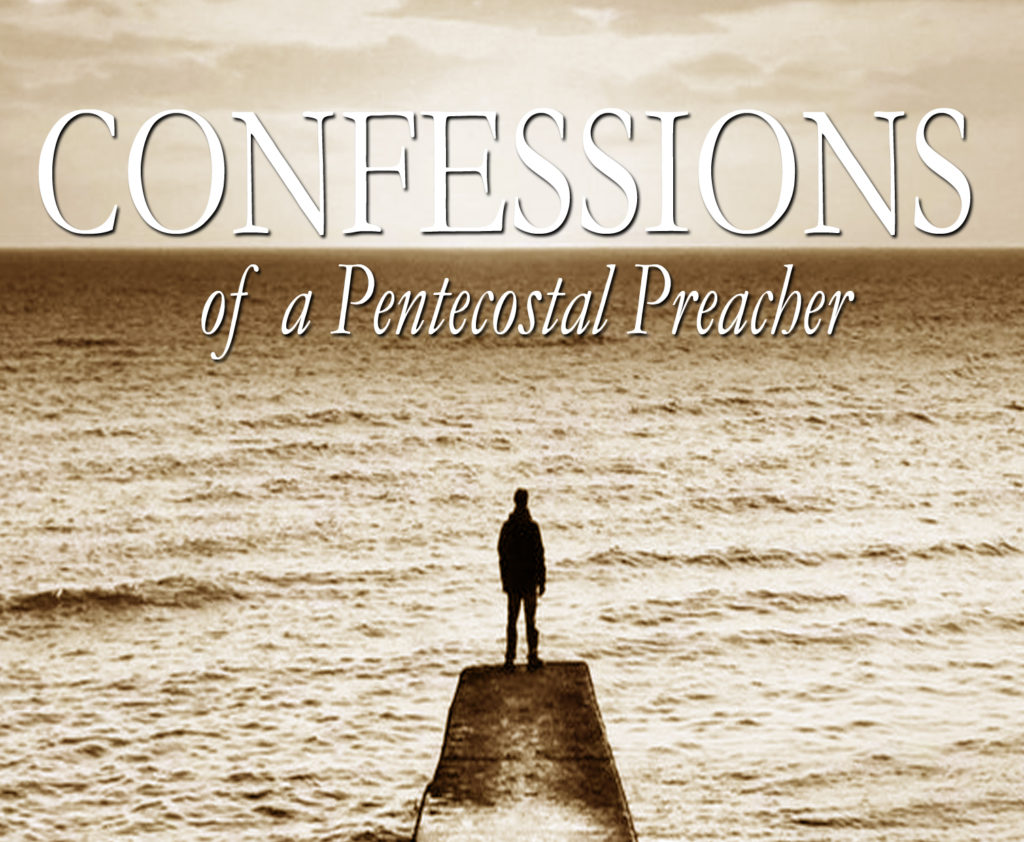Can Christians celebrate Hanukkah?
 Hanukkah, the Jewish Festival of Lights, began Sunday, a holiday which starts on the 25th of the Jewish month of Kislev and lasts for eight days. In the Gregorian calendar it begins December 2 and concludes December 10 in 2018. Hanukkah is also known as the Feast of Dedication, and while it is not written about in the Old Testament, it was an observance Jesus took part in during his earthly life.
Hanukkah, the Jewish Festival of Lights, began Sunday, a holiday which starts on the 25th of the Jewish month of Kislev and lasts for eight days. In the Gregorian calendar it begins December 2 and concludes December 10 in 2018. Hanukkah is also known as the Feast of Dedication, and while it is not written about in the Old Testament, it was an observance Jesus took part in during his earthly life.
“At that time the Feast of Dedication took place at Jerusalem. It was winter, and Jesus was walking in the temple, in the colonnade of Solomon,” John 10:22-23 recounts.
The holiday is fundamentally about the miracle of God being with the Jewish people during a time of great hardship and persecution.
Christian Hanukkah Tradition
Jews across the world are about to celebrate Hanukkah, the Jewish festival of lights. Few know that Christians also claim the story as part of their tradition.
Adherents of both faiths agree on the basics. About a century and a half after Alexander the Great’s conquests, Israel was ruled by the Seleucid dynasty, established by one of Alexander’s successors. The Seleucid king, Antiochus IV, aggressively persecuted Jews and erected a pagan altar in the middle of the Temple in Jerusalem. A band of Jewish fighters led by Judas Maccabeus mounted a resistance to Antiochus’ forces, and the Maccabees eventually recaptured the Jerusalem Temple.
Jewish literature, compiled by rabbis in late antiquity, preserved and retold these stories. Two Jewish works from the Hellenistic era, known as the First and Second Books of the Maccabees, also inform our understanding of the events. While these works didn’t become a part of the Jewish scriptures, they comprise part of the biblical canon for the Roman Catholic and Orthodox churches.
These Christians focused almost exclusively on the theme of martyrdom. In particular, they were fascinated by a narrative found in 2 Maccabees about an anonymous Jewish woman and her seven sons who allowed themselves to be tortured and killed by Antiochus rather than violate their faith. Early Christian writers understood the Jewish martyrs as role models, who achieved the ultimate goal of escaping this world for a better one. According to Ambrose, the fourth-century bishop of Milan, the mother could have encouraged her sons to avoid death, “but she considered that her maternal love lay in [urging] her sons to a life that is everlasting rather than an earthly one.”
The authoritative story of the Maccabean era in Jewish tradition is quite different. Jewish rabbinical literature in antiquity didn’t focus at all on the Maccabean martyrs in the context of Hanukkah. Instead it emphasized the role of the Jewish fighters and what happened after their victory. Like the Christian retellings, Jewish tradition focused on the partnership between man and God. But rather than locating that partnership in heaven, it identified it here on earth.
Jewish tradition’s emphasis on the Hanukkah miracle of the oil reinforces this point. In a story popularized in American culture by Jewish celebrities like Adam Sandler, rabbinical literature records that when the Jewish fighters finally recaptured the Temple in Jerusalem, they sought to rekindle its seven-branched oil lamp, best known by its Hebrew name, menorah. Although they only had enough oil for one night, it lasted miraculously for eight nights until the Jews were able to procure a new supply. This tradition focuses on temporal existence. The miracle of the menorah allows the Jews to work at resuming their regular lives here on Earth.
While Christian tradition connected the story of the Maccabean era to the Temple’s menorah, it did so in a different way. In praising the Maccabean martyrs, the Syriac Christian writer Severus of Antioch wrote: “Not so [truly] did the candlestick of seven lights which made glorious the temporal Temple give light, as did this woman with the seven human lights, her sons, give light to the Church.” Severus played down the significance of the Temple’s menorah by comparing its seven branches with the seven martyrs who left this world behind.
These two ways of remembering the Maccabees reflect larger differences between modern Jewish and Christian storytelling. Many have noted the deep Christian influence on high fantasy, like “The Lord of the Rings” and “The Chronicles of Narnia.” These epics stage the battle between good and evil in worlds not our own. By contrast, Jewish influence is most conspicuous on the comic superhero genre. The authors of these stories also narrate the struggle between light and darkness. Yet they do so not by imagining new worlds but by reimagining this one.
When Hanukkah arrives and Jews across the globe place menorahs in their windows or in front of their homes, remember that they are not merely commemorating the story of the Maccabees. They are making an important argument about that story and the lessons it holds for society. While a basic element of many faith traditions is that humanity should join with God, the Jewish message of Hanukkah is that such partnership should be anchored right here on Earth.
30 Years of Miracles: 2010
2010 was the year we felt led to stay in Bulgaria through the winter. It was not an easy decision. Bulgarian winters are hard on everyone, especially on churches and ministries. Even more so, to people who do not stay there all year around and are neither prepared not accustomed to the harsh snowy months. But it was important to be there as both the denomination and our local churches were struggling with difficult decisions ahead. 2010 was also the year where our ministry through the Bulgarian Chaplaincy Association was introduced to chaplaincy on the high sea. But this is another story…
By the fall of 2010, we had crossed Bulgaria several times ministering in most of the churches. Our count by October was at 200+ church services for the year. Dozens of cities and villages, multiple churches and denominations, and most often rented auditoriums for the evangelistic services, which have always been our main focus in ministry.
 As the fall was approaching, we were invited to ministry with our Bulgarian churches in Cyprus. One of our students from the Bulgarian Theological College had started six churches in different locations across the small Mediterranean island among the Bulgarian migrants. October there was still pretty warm and allowed for extensive travel. We held services twice daily for two weeks with a special conference on the last day.
As the fall was approaching, we were invited to ministry with our Bulgarian churches in Cyprus. One of our students from the Bulgarian Theological College had started six churches in different locations across the small Mediterranean island among the Bulgarian migrants. October there was still pretty warm and allowed for extensive travel. We held services twice daily for two weeks with a special conference on the last day.
But ministry was not so easy in the first couple of days after our arrival. As a matter of fact, I often recall that the first services felt like preaching behind a wall. The message was simply not getting through until we realized a different type of warfare needed to be engaged before the Gospel could be preached freely with power.
Such deep spiritual opposition could be hard to understand in other parts of the world where Christianity has been part of the local culture for centuries. It was challenging for our team as well to pin-point the reason and address it in prayer. But when you see a lady moving like a snake or trace not one, not two, but three young deacons in the ministry who cannot have children, it is pretty clear what needs to be done.
Early missionaries call this “demonic displacement” realizing that in a heavy occult island culture like Cyprus, the powers of darkness must be first spiritually displaced before people can receive the Gospel and be saved. Prayer warfare and intentional fasting quickly became part of our daily routine, and before the first week was over we experienced tremendous outpouring in various churches and even in open air services in locations like Pafos where the apostle Paul was beaten in Acts. As a direct result to this new ministry approach, the conference on the last day were there was attended by some 700 people who came from across the island and filled the tabernacle to such an extent that some had to be seated outside in the yard.
This book should have been published seven years ago in 2013. Its original subtitle was going to read “7 Years in Bulgaria.” Instead, it took seven years to finish it with all documents, research archives and new cases. Now, it is finally here and it finally reads like a story – not just choppy interviews, deposition documented testimonies or court records, but a story of struggle, strength and solitude. A story of life and a story of us.
1995-96 The establishing of the first Bulgarian Church of God in Chicago and its first split
2000-01 The contracted building of the ministry center for the Central Church of God in Sofia
2002-03 The church split in Southaven and what followed next
2005-06 The post-communist split of the Bulgarian Church of God and consecutive sub-denominations
2010-13 The social media network that cost us millions (of souls)
2016 The vote that forced to kill a church
2019-20 The sale of the ministry center for the Central Church of God in Bulgaria
READ: CONFESSIONS of a Pentecostal Preacher
CONFESSIONS of a Pentecostal Preacher
To Mark Alan
We know not why good people have to die,
but we do know we must tell their story…
Chapter I: Beyond the Church and into God
Be without fear in the face of your enemies.
Be brave and upright that God may love thee.
Speak the truth always, even if it leads to your death.
Safeguard the helpless and do no wrong.
That is your oath.
~Kingdom of Heaven (2005)
Separation of church from politics of false religiosity
The phone rang heavy and long. It was 4 AM in Bulgaria, but I was already up. A friend on the other end of the line was calling from South Carolina with a warning of some bad situation. The following morning, I was going to be contacted by the Director questioning why we were ministering in churches outside of our denomination.
The truth was we had ministered in some 300 local churches across the Balkan country of Bulgaria crossing all denominational boundaries and gathering youth from just about every confession. God had used us not only to reach and minister and to lead, but to step into an untouched spiritual realm, to undertake an unfamiliar ministry paradigm and to approach a brand new dimension of reality where He was to be the center of it all. And we had obeyed without questions. Now it was time to pay the price!
* * *
Our denomination, the one to which I remain both critically loyal and loyally critical, spreads over some five generations. Through its century old existence, the struggles and tension between theology and praxis has been in the center. And there, in the very essence of Pentecostalism itself, while some are always celebrating and being celebrated in the office or temple, others are always pushed in the periphery of normal life, hidden from the world behind closed doors and seeking a much deeper experience with God.
These modern day mystics are not only forgotten, but often forbidden. For their riot for righteousness cannot be conceived, contained and controlled by the religious norms of organized officiality. They speak as prophets to a world they so fervently try to escape from, about a reality that does not exist in the normal believer’s mindset. A stage of spirituality that cannot be preached without being lived in the social existence. And a relationship of God that goes far beyond common relationism and into God himself. That God, Who does not abide in offices and temples, but on the cross outside of the city walls…
But I knew nothing of this until that cold winter morning when the phone rang through darkness of the night. Knowing what is coming, rarely changes what we have done to get here.
7 Years in Bulgaria: CONFESSIONS of a Pentecostal Preacher
by Dony K. Donev, D.Min.
Upcoming Releases for United States (October, 2020)
Christmas Book Sale
All books by Cup&Cross on SALE
Clearance sale for the year with new titles coming up in early 2021
CLICK the picture below to view all titles on Amazon.com
Bulgaria under Pandemic Lockdown till March, 2021
Bulgaria just announced a national lockdown until the spring. The measure comes after 100+ days of anti-government protests and increase of daily COVID cases in the thousands. Some rightly believed, the hesitation of the government to enforce the measures earlier was in light of the upcoming 2021 elections for the Bulgarian Parliament. The delay helps current administration to remain in power as preliminary elections cannot be called within 3-months of regularly scheduled national elections. At the same time, elections under national emergency will be difficult if not virtually impossible to complete.
Churches are not specifically included among other entities under the restrictions. However, evangelical churches have been consistently targeted in the media and strictly censored by public health agencies. Participants in the largest Gipsy church on the Balkans in the city of Samokov were fined in the spring for having Palm Sunday service in the large church yard observing every necessary measure. Close to a dozen of evangelicals leaders died in 2020 due to COVID, which has left a mark on the evangelical community to such an extent that even Centennial of the Pentecostal Movement in Bulgaria could not be properly celebrated as planned. The pandemic has also infringed on the proper change of power within several evangelical denominations (Baptist, United Methodist, Church of God, Church of God of Prophecy, Assemblies of God Pentecostal Union), which had national leadership in 2020-21.
THANKFUL in 2020
10 Reasons to Be Thankful in the Midst of COVID-19 Pandemic
- Families spend more time together at home and in nature
- Gas prices have decreased
- Eating around dinner table has replaced going out to restaurants
- Prayer and return to the Faith has increased
- Homeschooling has become popular
- Open-air church meetings are coming back
- Communities are rallying together to help one another with less individualism
- Politicians are working more cohesively
- We are resourceful and not wasteful appreciating small things and basic necessities
- We are going back to the basics of a slower more grounded lifestyle
BLACK FRIDAY BOOK SALE
All books by Cup&Cross on SALE
Final clearance sale for the year with new titles coming up in early 2021
CLICK the picture below to view all titles on Amazon.com
American Pumpkin Ministry in Bulgaria

When Dony’s mom was last here in the US giving a report of Cup & Cross’s work in Bulgaria, we were able to send back with her some vegetable seeds for the churches under her care. Among them were American pumpkins.
Pumpkins are believed to have originated in Central America over 7,500 years ago and they were among the first crops grown for human consumption in North America. Pumpkins or ‘pumpions’ as they were once called, were brought to Europe around the 16th century and introduced by the French to Tudor England where they were quickly incorporated. Ever since that time, pumpkins have been grown in Bulgaria as well, where they are part of a wide variety of delicious pastries.
When Dony’s mother returned home to Bulgaria and went to check in with her churches she overseas in the Yambol Region, she was able to share with some of ladies these American pumpkin seeds. One lady who lives in a village owns several acres of farm land and was able to plant these seeds. Now that the Fall season is upon us, they have begun harvesting these pumpkins they are planning to share with people from the churches and the nearby villages where many families will enjoy them during this Holiday Season.
Polk Homeschool Network Hosts Field Day at the River Maze
November 10, 2020 by Cup&Cross
Filed under Events, Featured, News, Publication
30 Years of Miracles: 2009
 Mission BULGARIA 2009: Services in the Yambol Region
Mission BULGARIA 2009: Services in the Yambol Region
At the recent regional ministry conference, where the Yambol, Sliven, Bourgas and Nova Zagora regions were represented, many reported exciting ministry results in various locations. Revivals broke in the villages of Kamenetz and Malomir, spontaneous prayer meetings arise often, while healings and various miracles are reported almost weekly. A water baptismal service for new believers is scheduled for the beginning in August at the Thundja River. In the midst of severe poverty and political unrest, the move of God has become a life answer for many. It is personally challenging when you see the weather and earth beaten hands of the man worshiping beside you and you witness the widow giving her last mite. Then when service is over you notice how the frail elderly ladies cover their heads with a white cloth so that the sun does not beat on their heads during their walk home. So to say that we spent our day ministering to those of the village churches is an understatement because it is those of the village churches whom ministered to us. Our last service ended in the afternoon and it was truly a special day.
 National Youth Camp in Bulgaria (August 10, 2009)
National Youth Camp in Bulgaria (August 10, 2009)
In years past, we have visited and ministered to a dozen different youth camps in Bulgaria. Each of them has been unique and special, but it has been a while since we have ministered at a youth camp where people have been so hungry to receive from God. We prayed for the healing of dozens of people. Many more were delivered instantly from various infirmities, both in soul and in body. Eight young people received the baptism with the Holy Spirit the very first night and many more were baptized in the following evenings. You could see parents and children praying for each other around the clock. One girl saw a vision of the “Heart of God” being exalted in our midst. As we continued with our next ministry appointment in the city of Varshetz, some stayed behind to spend one more day in the presence of the Lord on the top of the mountain. We will reconvene with them this week at the next youth camp organized at the Karandila Mountain near the town of Sliven.
Renewing of the Evening Services in Yambol (September 1, 2009)
We report that with the assistance of our team and the help of many partners in ministry, the renewal of Sunday evening services at the Yambol Pentecostal Church has been successful. In the course of this work, we were able to witness a dramatic outpouring of the Holy Spirit each Sunday service from 6 to 10 PM as some hundred people gather for worship. We are still receiving reports of various healings and miracles that occurred each night, among which are:
- A lady of the worship team, who has played the violin in church all her life, scheduled for surgery that same week due to a bone-ligament condition was instantly healed during the prayer.
- Deliverance of multiple cases of headache, migraines and sinus were reported at the end of the alter service.
- As the church continued in several hours of prayer, around 9 PM a lady threw herself on the floor with screams and convulsions and was delivered from a demon.
- An elderly gentleman with a chronic condition in his vestibular apparatus due to a foot injury reported instant improvement and ran joyfully through the church.
- Several people reported improvement in their eyesight and hearing.
- Instant disappearing of pain and discomfort in bones, muscles, ligaments and chronicle conditions in back, hip and neck areas were reported during the prayer.
- A lady with a broken arm, who was watching the service live on the internet, later reported that her pain disappeared during the course of the service.
- Several people, who were brought to service from the local Dialysis Treatment Center, also reported instant relief. We are now waiting for doctoral reports as confirmation for the healings.
He Remains the Same (November 20, 2009)
This past Sunday we were able to return to the Awakening Church of God in Stara Zagora. After the Word, all in service gathered at the alter. Although the church was full, there were several families absent due to the flu epidemic which has spread across the country with 8 dead already accounted for. But during this time when the government is closing down schools and people are wearing masks for health reasons, the Lord’s healing power remains the same and we are reminded of His promise that He will protect His people and “it shall be well with them”. Among this, we were encouraged powerfully by the presence of the Holy Spirit in our meetings. After all the changes and transformations the Stara Zagora church has gone through during years past, it was encouraging that God remains the same. The people who are faithful to Him can trust in His ever-sameness with their lives and future, for His promises to us change not. Our team is planning to return to Stara Zagora before the end of the month for the next leg of our National Mega Youth Rally in Bulgaria
This book should have been published seven years ago in 2013. Its original subtitle was going to read “7 Years in Bulgaria.” Instead, it took seven years to finish it with all documents, research archives and new cases. Now, it is finally here and it finally reads like a story – not just choppy interviews, deposition documented testimonies or court records, but a story of struggle, strength and solitude. A story of life and a story of us.
1995-96 The establishing of the first Bulgarian Church of God in Chicago and its first split
2000-01 The contracted building of the ministry center for the Central Church of God in Sofia
2002-03 The church split in Southaven and what followed next
2005-06 The post-communist split of the Bulgarian Church of God and consecutive sub-denominations
2010-13 The social media network that cost us millions (of souls)
2016 The vote that forced to kill a church
2019-20 The sale of the ministry center for the Central Church of God in Bulgaria
READ: CONFESSIONS of a Pentecostal Preacher
CONFESSIONS of a Pentecostal Preacher
To Mark Alan
We know not why good people have to die,
but we do know we must tell their story…
Chapter I: Beyond the Church and into God
Be without fear in the face of your enemies.
Be brave and upright that God may love thee.
Speak the truth always, even if it leads to your death.
Safeguard the helpless and do no wrong.
That is your oath.
~Kingdom of Heaven (2005)
Separation of church from politics of false religiosity
The phone rang heavy and long. It was 4 AM in Bulgaria, but I was already up. A friend on the other end of the line was calling from South Carolina with a warning of some bad situation. The following morning, I was going to be contacted by the Director questioning why we were ministering in churches outside of our denomination.
The truth was we had ministered in some 300 local churches across the Balkan country of Bulgaria crossing all denominational boundaries and gathering youth from just about every confession. God had used us not only to reach and minister and to lead, but to step into an untouched spiritual realm, to undertake an unfamiliar ministry paradigm and to approach a brand new dimension of reality where He was to be the center of it all. And we had obeyed without questions. Now it was time to pay the price!
* * *
Our denomination, the one to which I remain both critically loyal and loyally critical, spreads over some five generations. Through its century old existence, the struggles and tension between theology and praxis has been in the center. And there, in the very essence of Pentecostalism itself, while some are always celebrating and being celebrated in the office or temple, others are always pushed in the periphery of normal life, hidden from the world behind closed doors and seeking a much deeper experience with God.
These modern day mystics are not only forgotten, but often forbidden. For their riot for righteousness cannot be conceived, contained and controlled by the religious norms of organized officiality. They speak as prophets to a world they so fervently try to escape from, about a reality that does not exist in the normal believer’s mindset. A stage of spirituality that cannot be preached without being lived in the social existence. And a relationship of God that goes far beyond common relationism and into God himself. That God, Who does not abide in offices and temples, but on the cross outside of the city walls…
But I knew nothing of this until that cold winter morning when the phone rang through darkness of the night. Knowing what is coming, rarely changes what we have done to get here.
7 Years in Bulgaria: CONFESSIONS of a Pentecostal Preacher
by Dony K. Donev, D.Min.
Upcoming Releases for United States (October, 2020)















